Ælfgif-who? provides short biographies of early medieval English women every two weeks. Click on the podcast player if you’d like to hear this newsletter read aloud in my appealing Yorkshire accent.

Hild of Whitby: Politician, Religious Leader, Teacher, Saint
Hild (also known as Hilda, a modern feminisation of her name) was the abbess of Whitby during a period known as the ‘Northumbrian Golden Age’, in which Northumbria was the most powerful kingdom in Britain, and one of the most important and connected cultural centres in Europe.
She was born in the early seventh century. Bede tells us that she died in 680 at age 66, which would put her birth in 614. However, Bede’s assertion that Hild became a nun at age 33 and died age 66 is likely an allusion to the convention that Christ died at age 33, creating a symmetry in her life that likens her entry into the church to Christ’s resurrection. Though we might take these perfectly symmetrical dates with a pinch of salt, they are still useful guidelines.
In a previous newsletter, I wrote about Hild’s mother Breguswith, and an incident recounted in Bede’s Ecclesiastical History that reveals something about the circumstances surrounding Hild’s early life. Hild was connected to the royal family of the kingdom of Northumbria through her father Hereric, who was the nephew of King Edwin. While Hereric was in exile during Hild’s infancy, he was poisoned and died, and Bede recounts how his wife Breguswith had a portentous dream in which her necklace began emitting light, which prefigured her daughter’s future greatness.
Bede tells us that Hild was baptized with her great uncle King Edwin on Easter day 627, when he converted to Christianity. We do not know much about the first half of her life, and it is quite likely that Hild had been a married woman. She decided to enter the religious life around age 33, perhaps having been widowed, and originally intended to go to a Frankish monastery. However, she was persuaded by Bishop Aidan of Lindisfarne to instead lead a religious house in Northumbria, and so she became abbess of the monastery of Hartlepool, the first royal monastery in Northumbria. Hild kept in contact with other members of the Northumbrian political and religious élite throughout her career. In 655 King Oswiu of Northumbria made a vow that if he won a battle against the Mercians, he would give his infant daughter to a nunnery, and give ten hides of land to found a new monastery. Oswiu won the battle, and gave Hild custody of his daughter Ælfflaed. Two years later Hild founded a new double monastery, ‘Streanaeshalch’, on the estates given by the king.
Streanaeshalch is understood by historians as the same location as Whitby in North Yorkshire. The name ‘Whitby’ is a Scandinavian one that cannot have developed earlier than the ninth century. The likelihood that these places are one and the same is compounded by both geographical and archaeological evidence. Some have put forward Strensall in North Yorkshire as a possible site for Streanaeshalch, as they are clearly derived from the same name compound. However, Bede mentions a nearby site also founded by Abbess Hild, Hackness, which he says is located nearly thirteen miles from Streanaeshalch. This distance fits the location of Whitby, whereas modern Strensall is much too far to be considered a likely site. Moreover, the fact that the Whitby site contains an excavated monastery from the right period, with evidence of somewhat advanced cultural production, fits with the image that Bede creates of Streanaeshalch as a focal point of culture and learning.
Whitby's importance as a centre of learning is reflected in the success of the pupils in the school that Hild established there, five of whom went on to become bishops. After 669 the monastery also developed close links with the school established at Canterbury by Hadrian, an abbot who brought books and expertise from Africa. During Hild’s abbacy, the earliest named English poet, Caedmon, lived at Whitby, and his talents were fostered and supported by Hild and the monastery. Caedmon’s story, as conveyed to us by Bede, is a miracle story. Caedmon was a cowherd at the monastery, and he was very shy and hated to perform. He would leave parties when others asked him to sing. One night he was sleeping in the cowshed and he woke up from a dream singing the most beautiful poetry. He performed his religious poetry for abbess Hild, who was so impressed she invited him to become a monk. Bede tells us he continued to write many important religious poems. Unfortunately, none of these survive apart from one: Caedmon’s Hymn. Along with the poem on the carved stone Ruthwell cross, and the inscription on the Franks Casket, a carved whalebone box that may have been created at Whitby, Caedmon’s Hymn is one of the earliest examples of English poetry. It’s worth noting that all three of these early English poems are Northumbrian in origin.
In 664 Whitby was the location of the famous Synod of Whitby. This was a church council held to decide whether Northumbria should follow Roman Christian practices, like the south of England converted by missionaries from Rome, or Irish Christian practices like the monks at Lindisfarne. The two types of Christianity had different liturgical calendars, and while King Oswiu followed the Irish calendar, his queen Eanflaed followed the Roman calendar, meaning that the king and queen celebrated Easter on different days! Hild took the side of Irish Christianity and the Lindisfarne community, while the Roman cause was championed by Abbot Wilfrid (later bishop Wilfrid), a friend of Queen Eanflaed. It was decided at the synod that Northumbria would follow the practices of the Roman church.
Hild began to suffer from an illness in 674. When she eventually died in 680, Bede reports that a nun at nearby Hackness saw her ascending to heaven, accompanied by angels. The reports of such miracles were the beginning of a saint’s cult for Hild. Her feast day, 17 November, was observed at least until the early eighth century, and she appears in the Old English Martyrology, an entry that has been considered evidence of a lost saint’s life dedicated to her. Hild’s relics were translated to Glastonbury in the tenth century, though Whitby continued to commemorate her.
There are a number of local legends about Hild. One is that she forbade seagulls from flying over the abbey, and another is that the seagulls that do fly over dip their wings in reverence to her. Another is the Whitby Snake Ammonite Myth, referred to in Sir Walter Scott’s Marmion. Those who have spent time in Whitby will know that the beaches are often full of fossils. I myself have acquired dozens of spiral ammonites from Saltwick Bay. The myth is that Hild turned a plague of snakes into stone, and that this is what ammonites are. This led to a local tradition of carving snakestones, ammonites with the heads of snakes, that are meant to bring good luck. There is even a superfamily of ammonites named after Hild: the Hildoceratoidea!
Hild had an integral role in the politics, religion and culture of early medieval Northumbria, and her influence in each of these areas is comparable to any man’s at that time. She was one of many important women with a central role in Northumbria’s flourishing during this period. The princess given to Hild’s monastery by King Oswiu after his victory, Ælfflaed, became her successor as abbess at Whitby, and continued to run Whitby as an important royal house and centre of learning. To this day, Hild is synonymous with the community at Whitby in the early Middle Ages. In Whitby itself, her legacy extends far beyond her own time. It is time that the gravity of her role is appreciated in a much wider vicinity.
Suggestions for further reading:
There is a fictional novel about Hild’s life: Hild, by Nicola Griffith (affiliate link). While this book is still on my to-read list, I have heard that it’s wonderfully written and got rave reviews.
The fullest account of Hild’s life, career and death is in Bede’s Ecclesiastical History. There is a very good paperback edition which is excellent value: Bede’s Ecclesiastical History of the English People trans. Colgrave and Mynors (affiliate link).







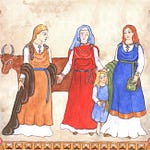
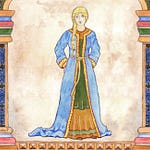
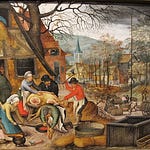
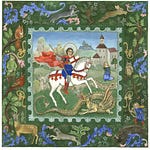



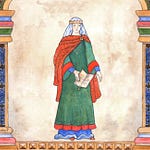
Share this post